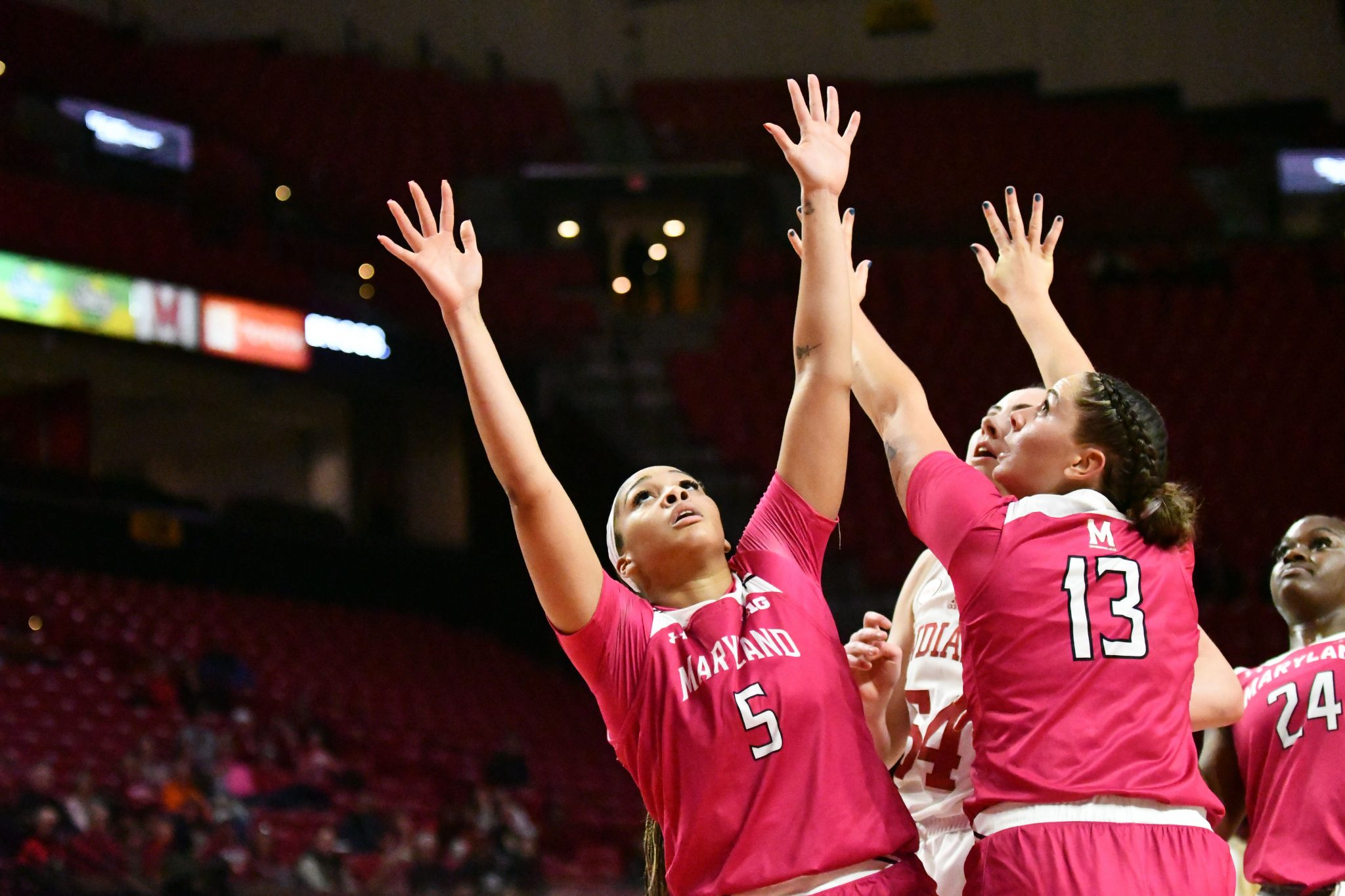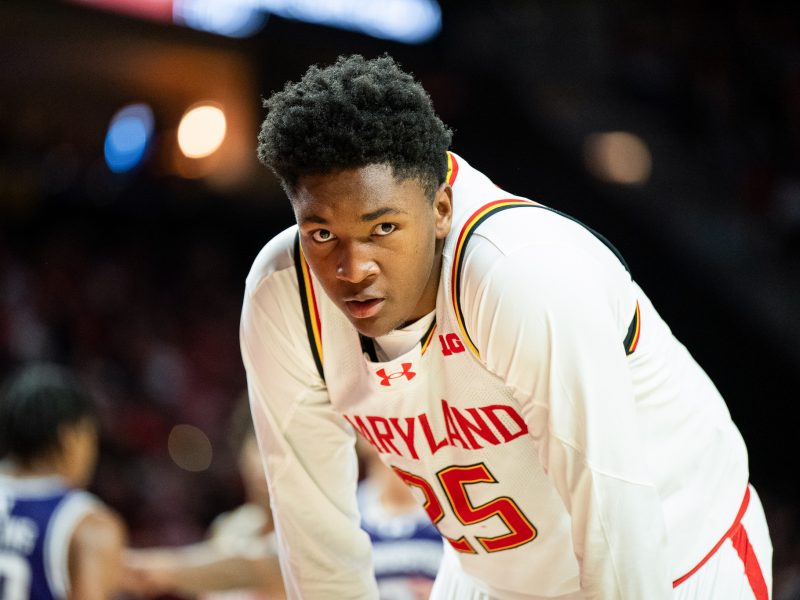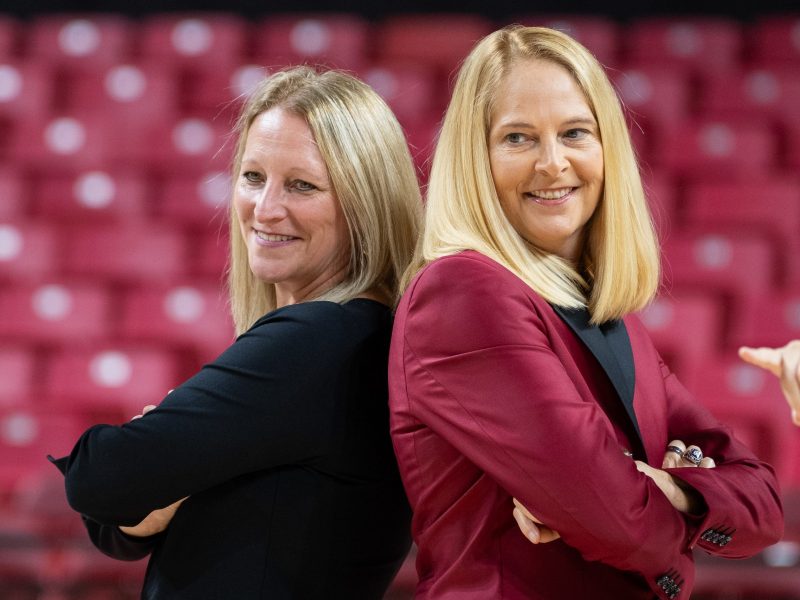Brenda Frese had to take a risk.
Maryland women’s basketball was preparing for a challenging clash with No. 10 Indiana, a dynamic offensive team. Injuries left the Terps without star guard Shyanne Sellers and limited their prep time ahead of the Wednesday matchup against the Hoosiers.
Frese had Maryland play a triangle-and-two defense, doubling Indiana forward Mackenzie Holmes with the rest of the Terps in a zone.
It didn’t work. The extra attention on Holmes left Indiana shooters wide open. The Hoosiers made six threes in a first quarter where they outscored Maryland by 10. Frese scrapped the defense in the first half but it was too late — the Terps lost handily at home.
“It was an epic fail,” Frese said.
Maryland pinpointed Holmes as Indiana’s biggest threat. The graduate student currently averages more than 20 points and seven rebounds per game. Her impact pairs with the Hoosiers’ perimeter skills to make them a top-10 team.
Coach Teri Moren’s team shoots 39.7 percent from three, which ranks second in the Big Ten. When Frese’s defense focused on halting Holmes, Indiana capitalized.
Maryland only had one day to practice the triangle scheme due to injuries. The team’s limited time to learn, combined with the Hoosiers’ elite offense, overwhelmed the Terps’ defense.
[Maryland women’s basketball’s comeback falls short in 87-73 loss to No. 10 Indiana]
“You’ve gotta scheme with what you got,” Frese said.
Holmes only finished with one assist, but Maryland’s defense allowed easy kickout passes to open shooters and didn’t close out with enough intensity to affect those shots. The first basket of the game featured strong Hoosier ball movement and ended with a triple from Chloe Moore-McNeil.
A few minutes later, Brinae Alexander and Faith Masonius denied an entry pass to Holmes. That left Lexus Bargesser, who had only made two threes entering Wednesday, open to nail a three-pointer.
“You sometimes feel like you’re coaching with one hand behind your back,” Frese said.
Four Hoosiers made at least one triple. Sara Scalia knocked down four. Maryland should have known Scalia was a dangerous shooter. The senior made 44.3 percent of her threes ahead of Wednesday’s game. But even she was wide open on the perimeter multiple times.
Scalia’s first three-pointer came midway through the first quarter. Bargesser caught the ball in the right corner and drove past a poor Jakia Brown-Turner closeout. That forced Alexander to slide over and left Scalia wide open on the left wing.
“It definitely helps as a shooter seeing your first couple shots go in,” Scalia said.
[Ahead of a crucial week, Maryland women’s basketball has limited depth]
Indiana’s 52 first-half points were the most Maryland had given up in an opening half all season.
“I think that first half was just on us,” Alexander said. “It was more about our energy and effort.”
The Terps played a much more aggressive style of defense in the second half. The Hoosiers committed five turnovers in the third quarter as a result of the Terps’ intensity.
Alexander noted that playing in a press defense forced Maryland to communicate more. Frese agreed but said her team does not have the depth to use the tiring strategy.
Maryland whittled the Indiana lead down to nine in the third quarter. It was one of their best defensive performances in weeks. The Terps limited the Hoosiers to just 33.3 percent shooting.
But it wasn’t enough. Indiana dominated as Holmes scored 23 points and collected 10 rebounds.
Maryland’s tests won’t get any easier. Caitlin Clark and No. 3 Iowa come to College Park on Saturday with the ability to make the Terps pay for any defensive missteps.



